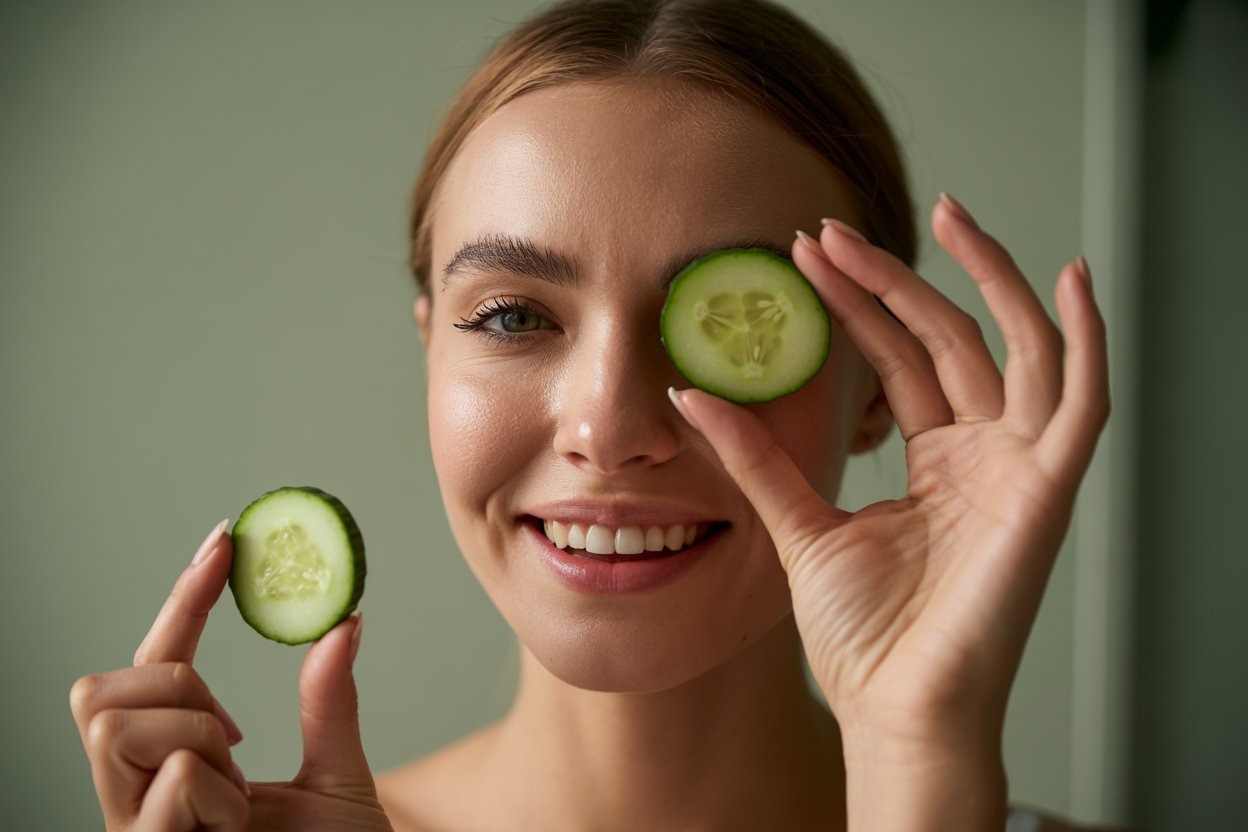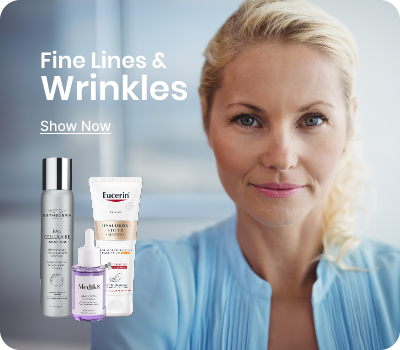
Bright, vibrant eyes are often the first feature people notice, yet they can also be the first to reveal fatigue, stress, and ageing. Under-eye puffiness and dark circles can cast shadows that make even the most energetic person look tired or older than they are. For many, this isn’t merely a cosmetic frustration but a reflection of underlying habits, lifestyle choices, or genetic predispositions. The good news is that these concerns don’t have to be permanent. With the right blend of science-backed skincare, mindful daily practices, and, when needed, professional treatments, it’s possible to transform the under-eye area and restore its natural radiance.
This comprehensive guide explores how to effectively reduce eye bags and dark circles with expert tips designed to create brighter, healthier-looking eyes. Whether you’re seeking subtle improvement or a complete transformation, this article provides practical, actionable strategies for achieving and maintaining brighter, youthful eyes that reflect true vitality and confidence.
Common Causes of Eye Bags and Dark Circles
Eye bags and dark circles are among the most common cosmetic concerns, yet they remain misunderstood. Eye bags typically manifest as mild swelling or puffiness under the eyes, while dark circles appear as discolouration or shadowing that gives the face a tired, aged appearance. These changes can occur due to thinning skin, fat redistribution, or pigment irregularities.
Genetic Factors That Make You More Prone to Under-Eye Issues
Heredity exerts a significant influence over how the under-eye area appears. People with a family history of dark circles or puffiness often inherit structural characteristics such as thinner dermal layers, which make blood vessels more visible, or increased melanin production that causes pigmentation to appear deeper. Others may have a naturally pronounced tear trough—a hollow groove running from the inner corner of the eye—which casts shadows and gives the illusion of darker circles. These genetic factors mean that even with adequate sleep and a balanced lifestyle, some individuals remain predisposed to noticeable under-eye concerns.
Lifestyle Triggers Such as Poor Sleep, Stress, and Dehydration
Daily habits magnify these inherited tendencies. Lack of quality sleep disrupts normal cell regeneration and slows down lymphatic drainage, leading to fluid retention and blood pooling beneath the eyes. Chronic stress further exacerbates this by raising cortisol levels, which can break down collagen and weaken skin integrity, making shadows and puffiness more visible. Dehydration adds another layer to the problem; without sufficient water intake, the under-eye skin loses elasticity and appears dull, which accentuates hollowness and dark pigmentation.
Medical Conditions and Allergies That Contribute to Persistent Puffiness
Beyond lifestyle factors, certain medical conditions can be powerful culprits. Sinus congestion and chronic allergies create persistent inflammation that swells the delicate under-eye tissue. Repeated rubbing or scratching of itchy eyes breaks fragile capillaries, leaving behind pigmentation and bruised-looking skin. Thyroid imbalances, anemia, and other systemic conditions may also manifest as under-eye puffiness or discolouration, making medical evaluation essential for stubborn or worsening symptoms.
How Lifestyle Choices Impact Under-Eye Appearance
The Role of Quality Sleep in Reducing Swelling and Discolouration
A consistent sleep schedule is one of the most powerful yet underestimated tools for maintaining a bright and refreshed under-eye area. During deep sleep, the body carries out cellular repair and produces collagen, a structural protein essential for skin thickness and elasticity. This process minimises fluid accumulation and improves blood circulation, which together reduce puffiness and discolouration. Poor or irregular sleep, on the other hand, slows this regeneration and allows blood to pool under the eyes, creating a shadowed, tired look. Establishing a calming bedtime routine, keeping the room dark, and maintaining a regular sleep–wake cycle can make a noticeable difference.
How Hydration and a Balanced Diet Improve Skin Health Around the Eyes
Consuming nutrient-dense foods rich in antioxidants, omega-3 fatty acids, and vitamin C strengthens the skin barrier and supports micro-circulation. Adequate hydration flushes out toxins, maintains the suppleness of the tissue, and prevents the under-eye area from appearing sunken or dull. Even mild dehydration can exaggerate hollows and fine lines, making consistent water intake essential. Pairing hydration with whole foods—like berries, leafy greens, nuts, and fatty fish—provides the nutrients required for long-term vibrancy.
Managing Stress to Prevent Tired, Dull-Looking Eyes
Chronic stress elevates cortisol levels, which degrade collagen and increase inflammation, both of which intensify puffiness and discolouration. Simple stress-management techniques such as deep breathing, yoga, stretching, or short outdoor walks help regulate hormones, improve circulation, and preserve the skin’s youthful structure. Over time, a calmer nervous system translates into brighter, healthier-looking eyes.
Eye Skincare Solutions for Lasting Results
Choosing the Right Eye Creams with Proven Active Ingredients
Selecting the right eye cream is one of the most crucial steps for improving and maintaining the appearance of the under-eye area. Because the skin here is thinner and more sensitive than the rest of the face, it requires targeted formulations rather than general moisturisers. Look for high-performing ingredients that work synergistically to address multiple concerns at once:
- Retinol stimulates collagen production, helping to thicken delicate tissue and smooth fine lines over time.
- Caffeine constricts blood vessels and reduces fluid retention, diminishing puffiness and dark shadows.
- Peptides strengthen the skin barrier and enhance elasticity, making the under-eye area more resilient to environmental stressors.
Regular use of these actives encourages gradual but long-lasting improvements rather than temporary fixes.
Incorporating Serums, Masks, and Gentle Massages into Your Routine
Beyond eye creams, integrating serums and masks into your skincare ritual elevates results. Serums with hyaluronic acid deeply hydrate and plump fine lines, while antioxidant-rich formulas protect against free radicals. Cooling under-eye masks, whether hydrogel or cloth, provide an instant surge of moisture and calm inflammation. To enhance the effect, gentle fingertip tapping or the use of jade rollers and gua sha tools can stimulate lymphatic drainage, dispersing trapped fluid and reducing morning puffiness. These techniques also improve micro-circulation, giving the under-eye skin a naturally refreshed glow.
Understanding the Importance of Sun Protection and SPF Under the Eyes
UV radiation is one of the fastest accelerators of skin thinning and pigmentation under the eyes. Daily sun exposure—even brief moments while walking outside—can damage collagen and deepen discolouration. Applying a lightweight, ophthalmologist-tested SPF specifically designed for the eye area creates an invisible shield that protects against both UVA and UVB rays. Pairing SPF with sunglasses and wide-brimmed hats further reduces cumulative sun damage. By making sun protection a non-negotiable part of your routine, you preserve the gains achieved through active ingredients and treatments, ensuring the under-eye area remains firm, even-toned, and youthful over the long term.
Natural Remedies for Brighter Eyes

Home Treatments Using Cooling Compresses and Natural Ingredients
Natural, cooling treatments can provide immediate relief to tired or swollen eyes while also improving the appearance of dark circles over time. Cold therapy constricts blood vessels beneath the thin under-eye skin, reducing swelling and diffusing discolouration. Simple household items are often surprisingly effective: chilled cucumber slices soothe inflammation and hydrate; cold spoons applied for a few minutes ease puffiness; and green tea bags, rich in caffeine and antioxidants, calm irritation while stimulating circulation. These low-cost, accessible remedies can be incorporated into a morning or evening ritual to refresh the eye area naturally.
Simple DIY Recipes to Soothe Puffiness and Lighten Pigmentation
Homemade blends made from gentle, skin-loving ingredients provide targeted care without harsh chemicals. For example, combining aloe vera gel with a drop of vitamin E oil produces a deeply nourishing mask that softens skin and delivers antioxidant protection. Another traditional remedy mixes rosewater and chilled milk to create a soothing compress that brightens tired eyes and minimises dullness. Other options include honey mixed with a touch of turmeric or a cool potato slice for their natural skin-lightening properties. These DIY solutions work best when used consistently and stored under hygienic conditions to maintain their potency.
Key natural ingredients to keep on hand for under-eye care include:
- Aloe vera for hydration and healing
- Rosewater for toning and refreshing.
- Cucumber for cooling and soothing
- Green tea for antioxidants and de-puffing
- Vitamin E oil for repairing and protecting
Daily Habits That Help Maintain Fresh, Youthful-Looking Skin
Consistency is essential for lasting brightness. Gentle cleansing removes impurities without stripping delicate skin, while a lightweight moisturiser seals in hydration. Adequate rest allows the body to repair overnight, reducing fluid retention and reinforcing skin resilience. Reducing salt and alcohol intake also prevents excess puffiness by minimising water retention. Combined, these habits form a stable foundation for healthier, naturally radiant eyes, ensuring that results from natural remedies are not only immediate but also long-term.
Advanced and Professional Treatments
Overview of Non-Invasive Procedures Such as Laser Therapy and Fillers
For individuals whose under-eye concerns persist despite diligent home care, modern non-invasive procedures offer highly effective solutions. Fractional and resurfacing lasers target both texture and pigment irregularities, stimulating collagen production and thickening the delicate skin beneath the eyes. This not only softens fine lines but also reduces the appearance of dark circles. Dermal fillers, often composed of hyaluronic acid, address hollow tear troughs by restoring lost volume. By lifting and smoothing the under-eye contour, fillers diminish shadowing dramatically, giving a more youthful and refreshed look without surgery.
When to Consider Dermatological or Medical Interventions
Some under-eye issues are too stubborn or advanced for topical products alone. Persistent puffiness caused by fat herniation, or pronounced pigmentation that resists creams and natural remedies, may require professional attention. Dermatologists can evaluate the underlying causes and recommend tailored procedures such as chemical peels for discolouration, microneedling with growth factors for collagen stimulation, or radiofrequency therapy to tighten lax skin. Early consultation prevents unnecessary trial-and-error and helps achieve safer, faster results.
How to Choose the Right Professional Treatment for Your Needs
Selecting the right practitioner is as important as choosing the procedure itself. Look for board-certified dermatologists or aesthetic physicians with a proven track record in periocular treatments. During consultation, discuss your goals, medical history, and budget openly to create a customised plan. A reputable specialist will perform a detailed assessment, explain the benefits and limitations of each option, and recommend a realistic timeline for visible improvement. This careful approach ensures outcomes that are both natural-looking and long-lasting.
Preventive Strategies to Keep Eye Bags and Dark Circles Away
Adjusting Daily Routines to Maintain Under-Eye Health
Prevention is far more effective than correction when it comes to maintaining a youthful, vibrant under-eye area. Establishing regular habits creates a strong barrier against future puffiness and pigmentation. Prioritising seven to eight hours of uninterrupted sleep allows the body to repair tissues and regulate fluid balance, reducing morning swelling. Consistent hydration keeps the skin supple and minimises the sunken appearance that often makes dark circles look worse. A gentle skincare ritual tailored to the delicate under-eye zone—such as cleansing with mild, non-irritating products—further protects against premature ageing and environmental stressors.
Nutritional Tips for Long-Term Skin Brightness and Elasticity
Diet plays an equally critical role in prevention. Nutrient-rich foods fortify the skin from within and improve its ability to resist damage. Incorporating a variety of colourful fruits, vegetables, and healthy fats provides antioxidants and essential micronutrients that strengthen capillaries and boost collagen synthesis. Key nutritional strategies include:
- Vitamin C–rich foods such as citrus fruits, bell peppers, and berries to support collagen production and brighten pigmentation.
- Zinc and amino acid sources like lean meats, legumes, and seeds to reinforce tissue repair and elasticity.
- Omega-3 fatty acids from salmon, flaxseed, or walnuts to reduce inflammation and maintain skin hydration.
- Adequate hydration throughout the day to flush toxins and prevent under-eye hollowness.
Creating a Sustainable Skincare and Wellness Plan
Consistency transforms minor habits into long-lasting benefits. Nightly application of a targeted eye cream prevents dryness and supports ongoing collagen maintenance. Reducing screen time or using blue-light–blocking glasses lessens digital eye strain, which can contribute to under-eye fatigue. Protective eyewear outdoors shields this delicate area from UV damage, further slowing pigmentation and thinning. Together, these simple practices form a comprehensive and sustainable wellness plan that safeguards the under-eye area over the long term, ensuring a fresher, brighter appearance well into the future.
Conclusion: Your Path to Brighter, More Youthful Eyes
Reviving tired eyes and banishing under-eye bags or dark circles isn’t about quick fixes or miracle products—it’s about adopting a consistent, holistic approach. By understanding the root causes behind puffiness and discolouration, you empower yourself to address them from multiple angles: quality sleep, balanced nutrition, stress management, and targeted skincare. Adding professional treatments when needed further accelerates results, creating a smooth, radiant under-eye area that reflects your inner vitality.
What makes these strategies so powerful is their synergy. Small, steady changes—like staying hydrated, wearing daily SPF, applying the right eye cream, or reducing screen time—compound over weeks and months into long-lasting improvements. When combined with evidence-based treatments and a well-rounded wellness plan, they can transform your under-eye area from a point of frustration into one of your best features.
Now it’s your turn: start by assessing your current habits and skincare routine, then choose one or two changes to implement today. Whether that’s adding a vitamin C–rich snack to your lunch, applying SPF under your eyes, or booking a consultation with a dermatologist, every step moves you closer to brighter, healthier-looking eyes. Begin today, and watch your under-eye area transform into a vibrant reflection of your overall well-being.





